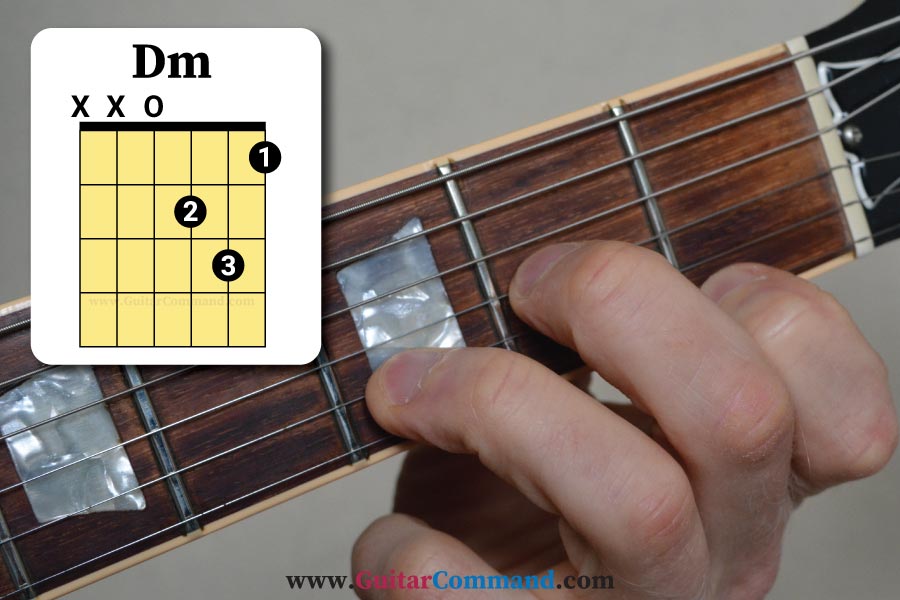A Dm guitar chord can be played either as an open chord or as a barre chord. The D minor chord contains three notes: D, F and A, and in most Dm guitar chord shapes, at least one of these notes is repeated in a different octave.
The symbol for a D minor chord is Dm, so if you see that symbol written on sheet music, any of the Dm chords on this page can be used.
The open Dm chord, below, is a relatively easy way to play a D minor chord on guitar. Once you've mastered it, try either of the two Dm barre chords. Although they can be tricky to play at first, barre chords give you more control over your strumming patterns and can be more suitable in some situations.
Page Index
- Open Dm Guitar Chord Diagram
- D Minor Barre Chord 1
- D Minor Barre Chord 2
- Which Dm Guitar Chord Shape Should I Use?
- D Minor Guitar Chord Notes
Related Pages
- Download our awesome guitar chord ebook: Printable Guitar Chord eBook
- See more open position guitar chords: Open Chords For Guitar
- Learn and master barre / bar chords: Guitar Bar Chords
Open Dm Guitar Chord Diagram
Below is the fretboard diagram for a basic Dm guitar chord shape.
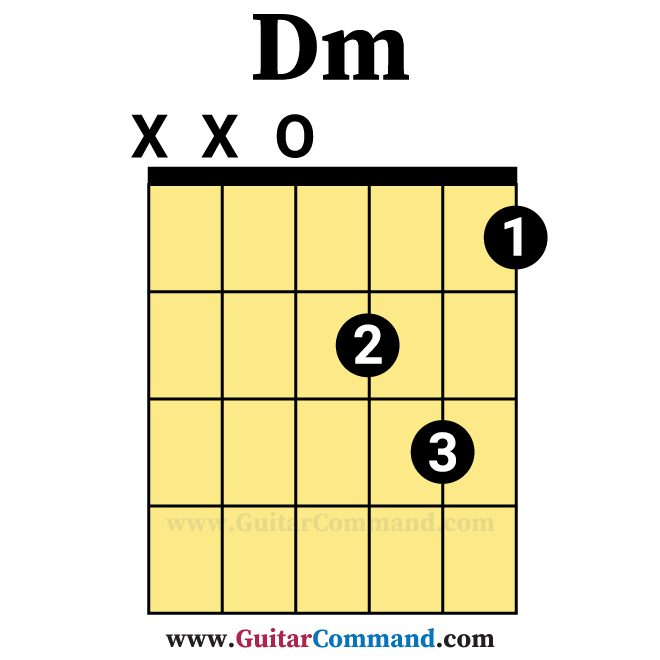
You can see this chord being played in the photo below:
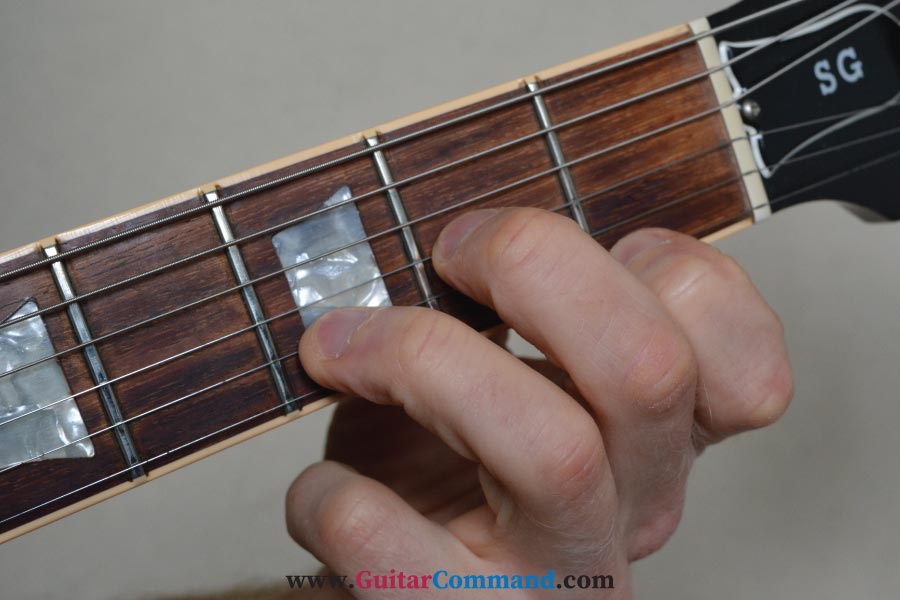
The X’s above the low E and A strings tell you that you shouldn’t include these strings when strumming this chord.
In fact, because a Dm chord does include an A note, it won’t sound terrible if you accidentally play the open A string when strumming the Dm chord. However, the chord will sound “weaker” without the root note D being the lowest note in the chord.
Dm Guitar Barre Chord 1
The diagram below shows the second most common way of playing D minor on guitar. It uses the open Am shape, but played as a bar chord with the index finger positioned at the 5th fret.
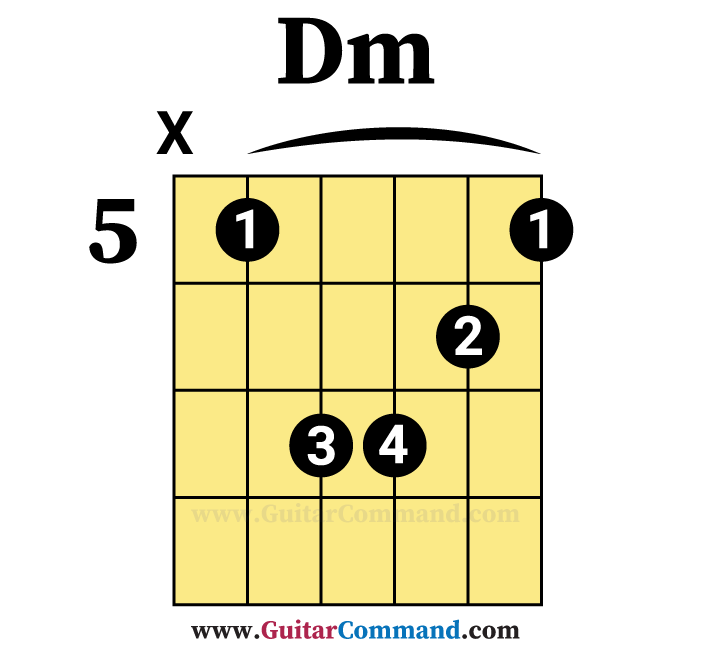
The X above the low E string on the chord diagram tells you that this string should not be played, so try to avoid this string when you strum the Dm chord.
You can see this chord being played in the photo below:
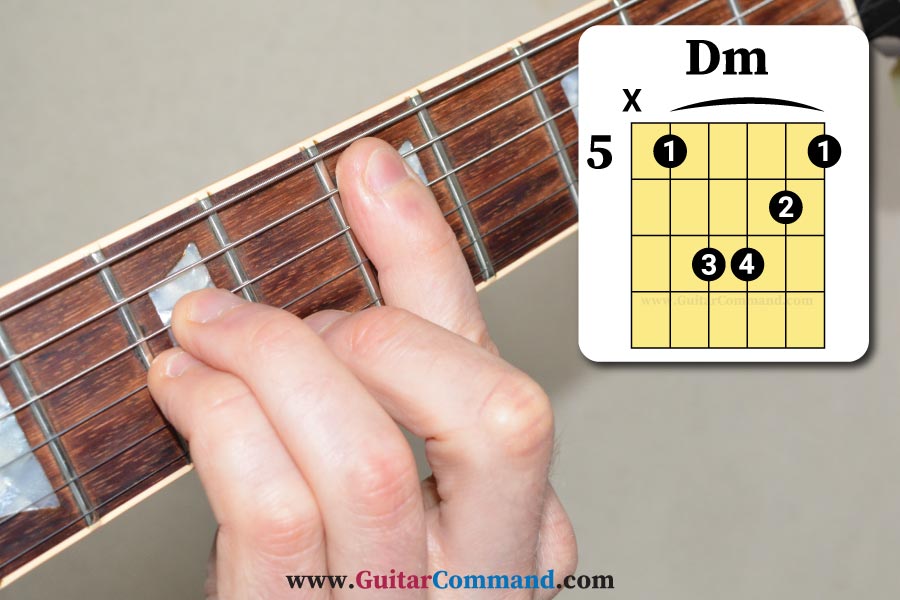
When you are used to playing this chord, you can try muting the low E string with the tip of the index finger (the finger that is making the bar) – thereby preventing it from ringing.
Dm Guitar Barre Chord 2
The diagram below shows a way of playing D minor on guitar at the tenth fret. This is quite far up the fretboard, and you may find that most of the time either one of the other Dm chord shapes on this page are more suitable – especially on an acoustic guitar.

In this chord, the index finger forms a barre over all six strings, and four of the six notes in the chord are fretted by this one finger.

When learning this shape, you should play each of the notes in the chord individually, to make sure that all are fretted correctly and able to ring out.
Which Dm Guitar Chord Shape Should I Use?
There is more than one way of playing most chords on the guitar. Ideally, you should play the chord that sounds best for the style of music you are playing.
You could also choose a chord based on how smoothly you can change to and from it. For example, if you need to change from Am to Dm, and you’re playing the A minor chord at the 5th fret, then in most situations the Dm bar chord at the 5th fret would be the logical choice.
If you were playing the open Am chord before the Dm chord, then the open Dm chord would usually be the best Dm to play.
D Minor Chord Notes
The D minor chord contains three notes: D, F and A.
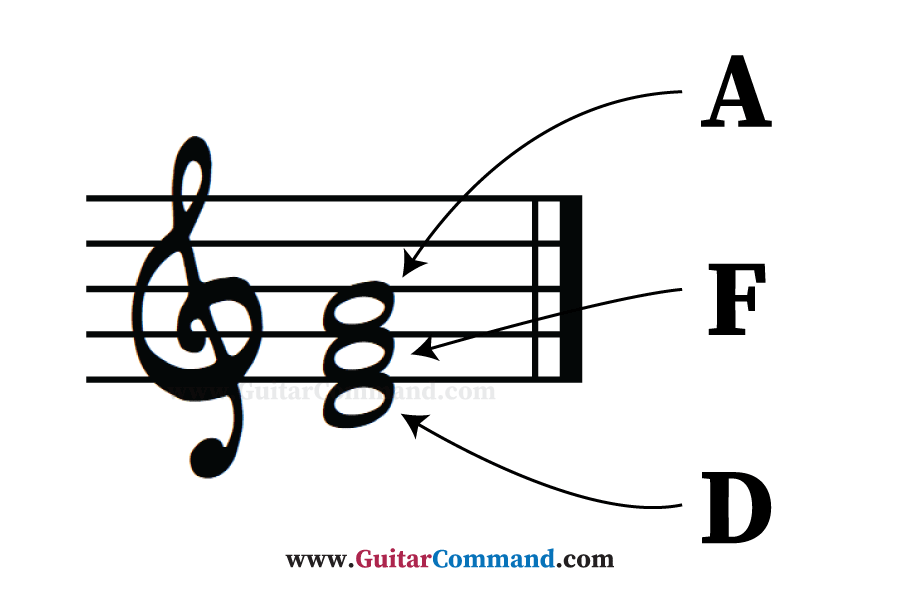
Although you could play a three-note Dm chord with just the D, F and A notes, it probably wouldn't sound great (in most circumstances). Most guitar chords, including the Dm guitar chords on this page, double up at least one of the notes in a different octave. This makes the chord sound much stronger.
For example, the open D minor chord at the top of this page contains two D notes: the open D string, and the D an octave higher (at the third fret of the second (B) string). You can see the notes in this chord in the diagram below.
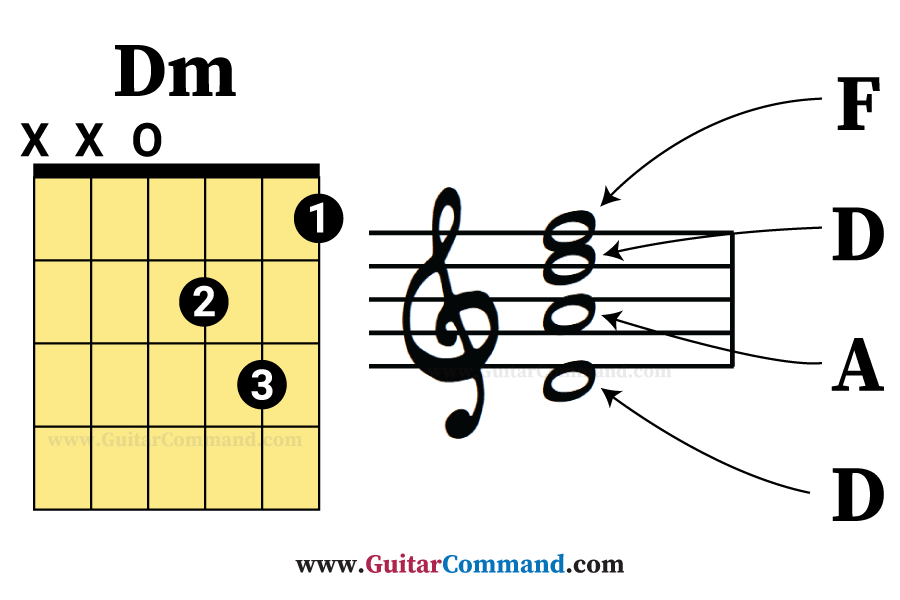
Related Pages
- Download our awesome guitar chord ebook: Printable Guitar Chord eBook
- See more open position guitar chords: Open Chords For Guitar
- Learn and master barre / bar chords: Guitar Bar Chords

